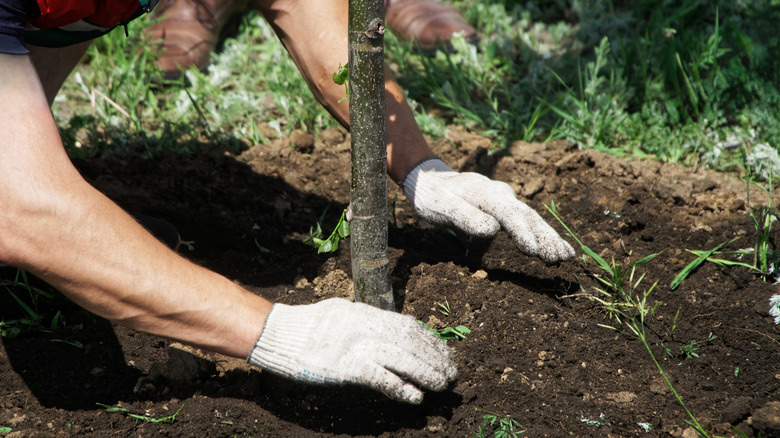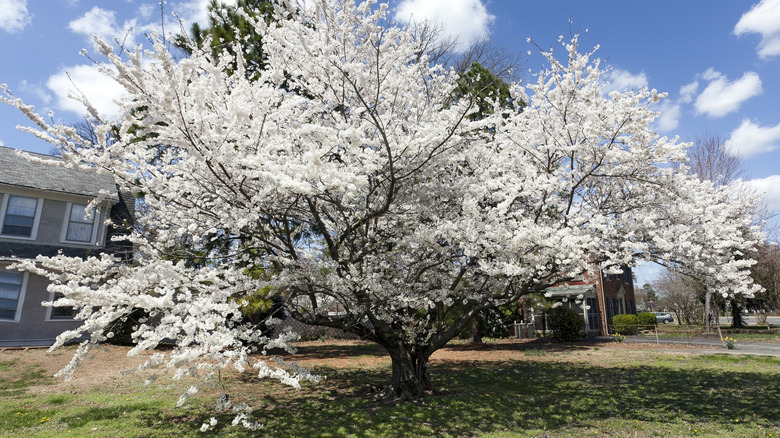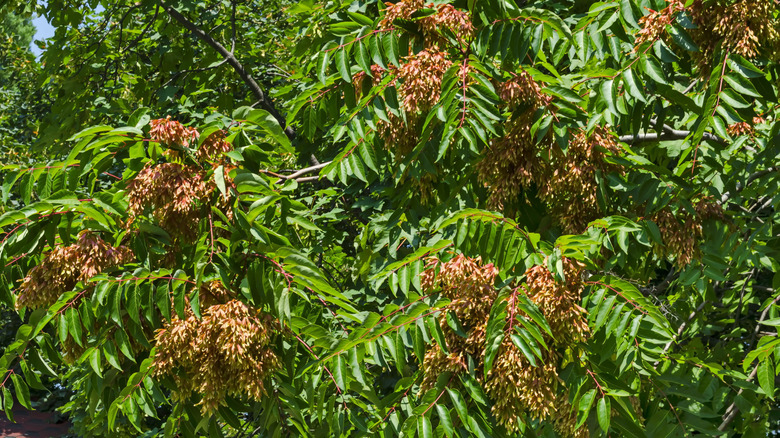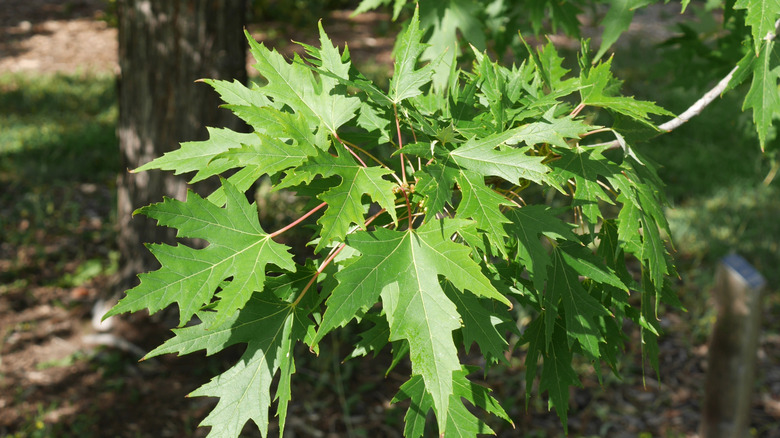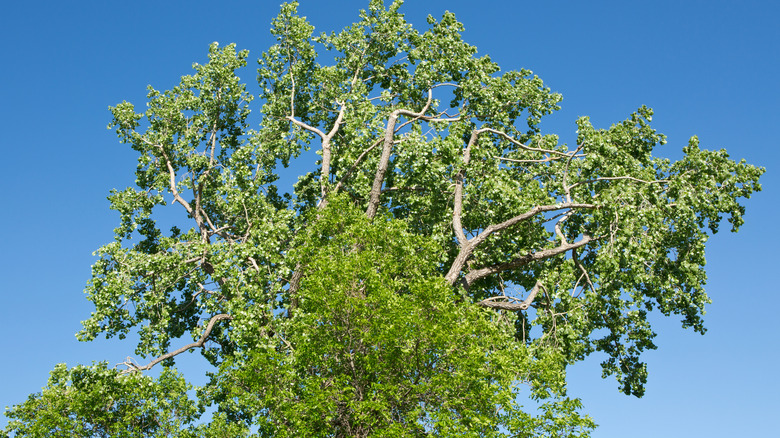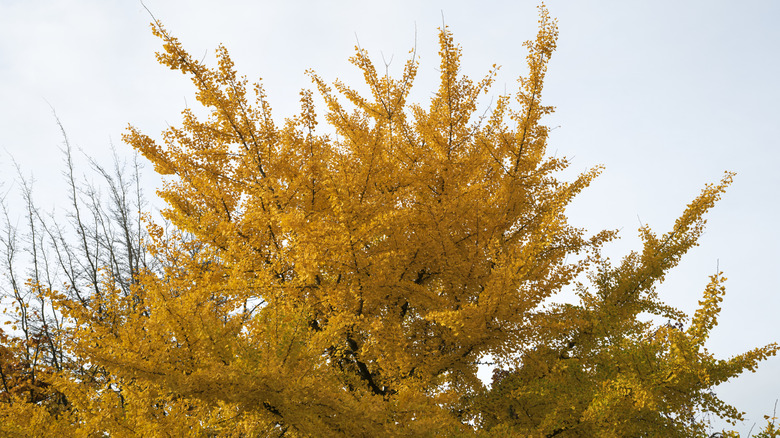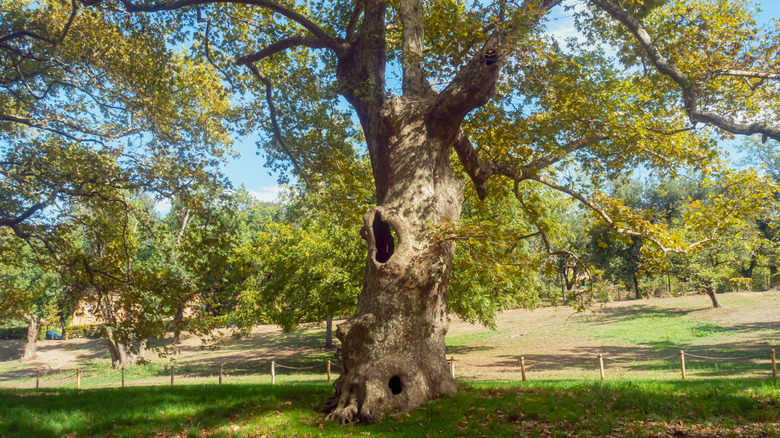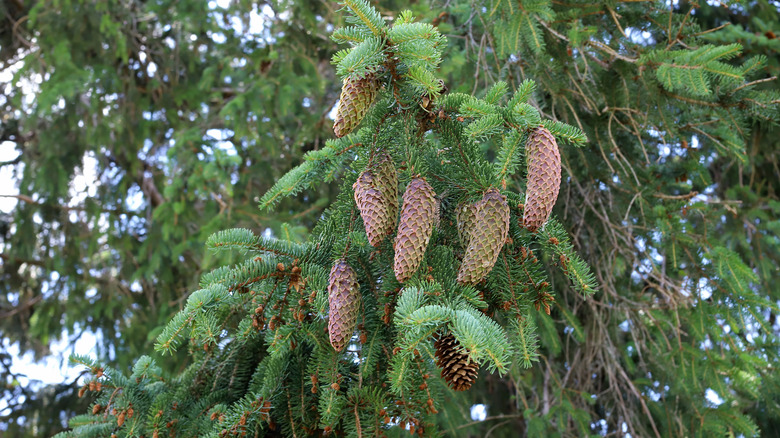7 Trees You Should Avoid Planting In Your Yard At All Costs
While some trees will boost your garden's health and appearance, others may do the exact opposite, and some might even ruin all of your hard work. Having trees in your yard can be extremely beneficial; not only do these plants cool down your garden and improve the overall air quality, but they can also boost your own health, enhancing your immune system and reducing your heart rate. However, when you have a tree that overgrows local plants or breaks easily in storms, it might be doing more harm than good.
If you've been considering adding a tree to your yard, but can't quite decide which one to choose, you should be warned that not all trees are equal. While some might look pretty, they could be a detriment to your home and the local biodiversity. Some trees might end up wreaking havoc on your yard, spreading undesired fruits and odors instead of adding any benefits. Others might attract invasive pests or unwanted critters. Of all the trees you could plant in your garden, there are a few that top the list of "do not plant." We've put together a list of seven species to avoid — including fruit trees, shade trees, and purely ornamental specimens — and why.
Bradford pear
Despite its flowery and delicate appearance, the Bradford pear tree (Pyrus calleryana), also called the Callery pear, is an invasive species that overgrows native plants. It not only has an irritating odor, often smelling like rotten meat, but its plentiful fruit can smother your yard. The tree branches themselves are narrow, which causes the tree to experience more damage during storms and eventually crumble under its own weight. As the worst tree to plant in your midwestern yard, it's illegal to sell or cultivate Bradford pear trees in states such as Ohio due to their environmental consequences.
Tree of heaven
Infamous for attracting invasive spotted lanternflies, the tree of heaven (Ailanthus altissima) is another species to avoid adding to your garden. It may have an idyllic name, but this tree is far from picturesque. Originally grown as an ornamental tree, this species is now considered incredibly invasive, and if you have one already in your yard, it's recommended you remove it. These trees have aggressive roots that can disturb your garden and even your sidewalks.
Silver maple
As beautiful as a silver maple tree (Acer saccharinum) might be, it's not the best option to add to your garden. Considered an overplanted species, silver maples are not only aggressive, but their overabundant fruit production can cause damage to the rest of your yard. These trees can also harm underground plumbing with their expansive root systems, causing them to be banned from sidewalks in some locations. Silver maples are considered high-maintenance, so think twice before planting this fast-growing shade tree.
Green ash
Out of the over 60 species of ash trees, green ash (Fraxinus pennsylvanica) is one you don't want to plant in your yard. While the tree itself isn't harmful, it attracts invasive emerald ash borers (Agrilus planipennis), a beetle that has killed millions of ash trees across North America. For this reason, it's not recommended to plant a green ash in your yard, as it requires regular insecticide treatment to stave off the emerald ash borers. Plus, the destruction from the borers causes the trees to weaken, making them more susceptible to breakage during wind and storms.
Ginkgo
While a female ginkgo tree (Ginkgo biloba) might be nice to look at, with its yellow hue and fan-shaped leaves, you do not want one of these in or near your yard. If you've ever had the displeasure of smelling a ginkgo tree, then you will understand why. These trees produce quarter-sized seeds covered in a soft substance that contains butyric acid, a short-chain fatty acid also found in animal fats and expired butter. If you enjoy the look of a ginkgo tree, make sure to purchase a male tree, as these cannot produce the offensive-smelling fruit.
Sycamore
As popular and well-known as they might be, sycamore trees (Platanus occidentalis) are not advised as a garden addition. These giant trees tend to grow quicker than expected and can overpower your yard, particularly with their destructive root system. They can even grow multiple trunks. This species is also susceptible to the fungal diseases sycamore anthracnose and powdery mildew, both of which can damage the trees' leaves and force them to fall. Ultimately, a sycamore tree will be a high-maintenance addition to your yard.
Norway spruce
If you live in the northeastern part of the United States, you should avoid planting a Norway spruce tree (Picea abies) in your yard. This non-native species is considered invasive and can overgrow local plants, causing a disruption to the local biodiversity. Norway spruces are more susceptible to fungal diseases, such as Cytospora canker and Rhizosphaera, as well as to pests like bagworms and spruce spider mites. However, if you live in USDA hardiness zones 3 through 7, you should be able to plant this tree without causing harm to the rest of your yard.
